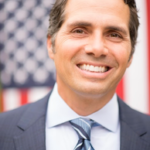Third Parties
2016 Libertarian US Senate Candidates at a Glance
A half-dozen Libertarians on the ballot this cycle had previously represented their party as a U.S. Senate nominee.
Read MoreLibertarians On the Rise: Will Gary Johnson Boost His Party’s 2016 Gubernatorial Nominees?
Libertarian nominees have set party records in the most recent gubernatorial election in 16 states; three quarters of states with gubernatorial races this cycle are slated to have Libertarian candidates.
Read MoreSecond Chances: Will Gary Johnson Improve in 2016?
Nearly two-thirds of repeat third party nominees performed worse during their second White House run.
Read MoreHow Big a Footprint Will Drew Curtis Leave on Kentucky’s Gubernatorial Race?
Over the last 100 years only two non-major party gubernatorial candidates in the state have received one percent of the vote – and one was a former governor.
Read MoreLibertarians Notch Record-Setting Cycle in 2014 US Senate Elections
Nominees from the nation’s largest third party set records in 10 states last cycle for the largest support ever recorded in a U.S. Senate election.
Read MoreThe Revolution Continues: 3rd Party and Independent US Senate Candidacies in 2 Charts
The rate of third party and independent U.S. Senate candidacies over the last two decades has increased 60+ percent compared to the first 75 years of the direct election era; 2014 may make the biggest splash yet.
Read MoreAre Dr. Drew and Adam Carolla Libertarians?
The HLN host is fed up with the ‘tyranny’ of governmental overreach while Carolla goes on the record that he is a libertarian.
Read MoreRise of the Independents? Greg Orman Victory Would Make Senate History
No more than two independents have served in the chamber at the same time; the last time three non-major party officeholders served in the U.S. Senate was 1940.
Read MoreThe 10 Percent Club: 2014 Gubernatorial Edition
At least four third party, independent, or write-in gubernatorial candidates have won 10+ percent of the vote in every midterm election since the 1986 cycle – a trend likely to continue this November.
Read MoreZaun Could Notch Best Iowa Indy Congressional Mark in Nearly 100 Years
No third party or independent candidate running for the U.S. House from Iowa has won five percent of the vote since 1934; only four of 238 candidates have reached 10 percent since 1914.
Read More







